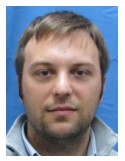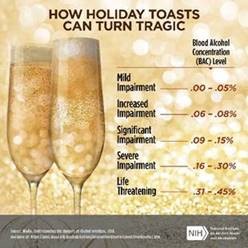NIAAA Director's Report on Institute Activities to the 150th Meeting of the National Advisory Council on Alcohol Abuse and Alcoholism
Table of Contents
- NIAAA BUDGET
- IN MEMORIAM
- COLLABORATIVE RESEARCH ON ADDICTION AT NIH UPDATE
- DIRECTOR'S ACTIVITIES
- STAFF TRANSITIONS
- HONORS AND AWARDS
- NEW REQUESTS FOR APPLICATIONS AND PROGRAM ANNOUNCEMENTS
- NOTABLE NIAAA STAFF ACTIVITIES
- WHAT'S AHEAD
- NIH RESEARCH HIGHLIGHTS
- NIAAA COMMUNICATIONS ACTIVITIES
NIAAA BUDGET
Fiscal Year (FY) 2018
The National Institute on Alcohol Abuse and Alcoholism (NIAAA) closed FY 2018 on September 30, 2018; the final appropriation for NIAAA was $509.6 million. This represents a $27.2 million or 5.6 percent increase over the FY 2017 budget level. The NIAAA appropriation includes $5.8 million set aside for the Brain Research through Advancing Innovative Neurotechnologies (BRAIN) Initiative. A summary of key funding actions within this appropriation are as follows:
- NIAAA awarded 738 research project grants (RPGs), including 253 competing awards, which corresponds to a success rate of 26.7 percent.
- NIAAA funded 20 research centers for $30 million.
- NIAAA funded 175 other research grants for $43.1 million, including Career awards, one Cooperative Clinical Agreement, and several resource and conference grant awards.
- NIAAA supported 305 full-time training positions for $14.7 million.
- NIAAA funding for its Research and Development (R&D) contract portfolio was $34.4 million.
- NIAAA support for intramural research totaled $52.8 million
FY 2019
On September 28, 2018, the President signed H.R.6157, the Department of Defense and Labor, Health and Human Services, and Education Appropriations Act, 2019 and Continuing Appropriations Act, 2019 Public Law No. 115-245. The National Institutes of Health (NIH) received a total of $39.3 billion, $2.1 billion above the FY 2018 enacted level. This funding includes allocations for research on opioids, the 21st Century Cures Act, the BRAIN Initiative, and research on influenza. The bill provides a general increase to NIH Institutes and Centers and it continues to provide support for the Gabriella Miller Kids First Act pediatric research initiative.
The FY 2019 appropriation for NIAAA provides $525.6 million. This represents a $16 million or 3.1 percent increase over the FY 2018 budget level. NIAAA estimates it will support a total of 777 RPGs in FY 2019.
IN MEMORIAM
 Ting-Kai Li, M.D., a renowned scientist who served as NIAAA's director from 2002 to 2008, died on November 18, 2018, at Duke University Hospital in Durham, North Carolina.
Ting-Kai Li, M.D., a renowned scientist who served as NIAAA's director from 2002 to 2008, died on November 18, 2018, at Duke University Hospital in Durham, North Carolina.
Dr. Li’s contributions to the alcohol field were monumental. He was a brilliant researcher acclaimed for his seminal work on the metabolism, pharmacokinetics, and pharmacogenetics of alcohol, as well as the neurobiology and genetics of alcohol-related behavior. An early advocate for the development of animal models of alcohol use disorder (AUD) with predictive validity, Dr. Li pioneered some of the most widely used genetic models of excessive alcohol consumption. He played a major role in bridging biology and neuroscience with alcohol and addiction research in general, leading the way for the modern disease concept accepted today.
As NIAAA Director, Dr. Li provided visionary leadership, blending administrative expertise with a comprehensive understanding of alcohol’s impact at the clinical, epidemiological, and societal levels. Dr. Li cultivated research that transformed our understanding of AUD as being strongly influenced by gene-environment interactions, with roots often beginning in childhood and adolescence. He was key in demonstrating that patterns of drinking are the best indicators of alcohol problems in much the same way that numerical measurements of blood pressure, cholesterol, and triglycerides relate to relative risk for cardiovascular disease. He fostered an academic environment across the Institute, establishing inter-disciplinary science teams to focus on emerging issues in the field.
Under Dr. Li’s guidance, NIAAA expanded innovative scientific collaboration, assembling, for example, an underage drinking research initiative with a steering committee comprising NIAAA staff and expert outside advisors, the work of which influenced the first Surgeon General’s Call to Action to Prevent and Reduce Underage Drinking (2007). During Dr. Li’s tenure, NIAAA also developed the Integrative Neuroscience Initiative on Alcoholism, one of the first consortium-based programs adopting a neuroscience approach to address scientific questions from molecular to system levels of analysis. Dr. Li broadened NIAAA’s work force, actively recruiting talented scientists in pharmacotherapy, alcoholic liver disease, and epidemiology. Finally, Dr. Li was a dedicated and admired scientific mentor who championed support for young investigators. His legacy will live forever in his work and contributions to the alcohol field.
Born in Nanjing, China, Dr. Li earned his undergraduate degree from Northwestern University and his M.D. from Harvard University. Dr. Li joined the faculty at Indiana University as professor of medicine and biochemistry in 1971. He subsequently was named the school's John B. Hickam Professor of Medicine and Professor of Biochemistry and later Distinguished Professor of Medicine. In 1985, he became director of the Indiana Alcohol Research Center (IARC) at the Indiana University School of Medicine, where he also was the Associate Dean for Research from 1986 to 2000. Dr. Li was an Honorary Fellow of the Society for the Study of Addiction (United Kingdom) and a member of the Institute of Medicine (now the National Academy of Medicine).
A loving husband, father, and grandfather, Dr. Li is survived by his wife, Susan; daughters Jennifer Li and Karen Li; sister, Yuling Wei; and six grandchildren.
COLLABORATIVE RESEARCH ON ADDICTION AT NIH (CRAN) UPDATE
Adolescent Brain Cognitive Development (ABCD) Study
The ABCD Study (https://abcdstudy.org/) successfully completed its baseline enrollment of 11,874 participants ages 9 to 10 and has begun follow-up assessments for the longitudinal study. The focus of activity will now shift to retention of the enrolled participants as they go through their adolescent years. Three NIH Notices were released on October 9, 2018, describing an intent to publish limited-competition notice of funding opportunities (NOFOs) for renewal of the Coordinating Center, the Data Analysis and Informatics Center, and the Research Project Sites of the nationwide ABCD Consortium. The NOFOs are expected to be published in March 2019. NIH has approved a renewal award period of 7 years. The annual meeting of the ABCD Study was held in La Jolla, California, October 31–November 1, 2018, and included ABCD principal investigators and their research staff, NIH program officials, and members of the ABCD National Advisory Board and the ABCD Observational Study Monitoring Board. On December 9, 2018, the CBS television program 60 Minutes aired a segment titled “Groundbreaking Study Examines Effects of Screen Time on Kids.” This Anderson Cooper segment was about the ABCD Study acquiring data from participants on their amount of daily screen time (such as with a smartphone) and the possible resulting effects on brain structure, behavior, and child health.
DIRECTOR’S ACTIVITIES
NIAAA’s Director, George F. Koob, Ph.D., made several important presentations between August 1, 2018, and 31, 2018:
- “Dark Side of Addiction” at the Cold Spring Harbor Laboratory/National Institute on Drug Abuse Course on Addiction in Cambridge, England, on August 4, 2018
- “Negative Reinforcement, Hyperkatifeia, Pain and Negative Urgency” at the Center on Compulsive Behavior Annual Retreat at NIH in Bethesda, Maryland, on September 14, 2018
- “Preventing Binge Drinking During Adolescence and Young Adulthood: A Neurodevelopmental View” at the Second World Congress on Prevention of Addiction in Children and Adolescents in Tijuana, Mexico, on September 24, 2018
- “Neurobiology of Addiction: Hyperkatifeia, Pain and Sex Differences” at the U.S. Food and Drug Administration Opioid and Nicotine Use, Dependence, and Recovery Meeting in White Oak, Maryland, on September 28, 2018
- “What Can Science Tell Us about the Diagnosis, Prevention and Treatment of Alcohol Use Disorders?” at the 2018 National Hispanic Science Network Annual International Scientific Conference in Rockville, Maryland, on October 1, 2018
-
- “Alcohol and the Female Brain” at the American Society of Addiction Medicine State of the Art Course in Addiction Medicine in Washington, D.C., on October 12, 2018
- "Prevention of Adolescent Binge Drinking: A Neurodevelopmental View” at the American Society of Addiction Medicine State of the Art Course in Addiction Medicine in Washington, D.C., on October 12, 2018
- “Sleep and the Health of Women: Alcohol Misuse” at the 2018 Research Conference on Sleep and the Health of Women in Bethesda Maryland, on October 16, 2018
- “Are Alcohol-Related Problems Getting Worse: The Good, the Bad and the Ugly” at the San Diego Psychological Association Fall Conference in San Diego, California, on. October 27, 2018
- Neurobiology of Addiction: Drug Reward to Negative Reinforcement and Hyperkatifeia” at the All-California Psychiatry Research Residency Retreat in San Diego, California, on November 3, 2018
- “NIAAA Update: Priorities Going Forward” at the American College of Neuropsychopharmacology Annual Meeting, NIH Institute Director’s Session in Hollywood, Florida, on December 9, 2018
 Carlos Gomez joined the Administrative Services Branch, Office of Resource Management on October 29, 2018, as an Administrative Officer supporting the extramural offices and divisions within NIAAA. Carlos began his federal career at the National Institute of Dental and Craniofacial Research (NIDCR) in 2010 as a warranted Purchasing Agent, where his eagerness to learn the role of administration quickly resulted in his becoming an Administrative Technician in the Office of Administrative Management, NIDCR. In 2016, Carlos became an Administrative Officer for the Office of the Director, supporting the NIH Division of Police.
Carlos Gomez joined the Administrative Services Branch, Office of Resource Management on October 29, 2018, as an Administrative Officer supporting the extramural offices and divisions within NIAAA. Carlos began his federal career at the National Institute of Dental and Craniofacial Research (NIDCR) in 2010 as a warranted Purchasing Agent, where his eagerness to learn the role of administration quickly resulted in his becoming an Administrative Technician in the Office of Administrative Management, NIDCR. In 2016, Carlos became an Administrative Officer for the Office of the Director, supporting the NIH Division of Police.
 Dr. Andrew Kesner recently joined the Laboratory for Integrative Neurosciences as a Postdoctoral Fellow. Dr. Kesner received his degree from Johns Hopkins University as part of the Graduate Partnership Program with the National Institute on Drug Abuse. Dr. Kesner will examine the effects of chronic cannabinoid drug and alcohol on sleep to determine the mechanisms underlying the sleep-disruptive effects of these drugs.
Dr. Andrew Kesner recently joined the Laboratory for Integrative Neurosciences as a Postdoctoral Fellow. Dr. Kesner received his degree from Johns Hopkins University as part of the Graduate Partnership Program with the National Institute on Drug Abuse. Dr. Kesner will examine the effects of chronic cannabinoid drug and alcohol on sleep to determine the mechanisms underlying the sleep-disruptive effects of these drugs.








Dr. Roz Breslow retired from the Division of Epidemiology and Prevention Research (DEPR) in December 2018 after 17 years of outstanding NIAAA service as an epidemiologist. Dr. Breslow oversaw the Alcohol Epidemiology Data System contract and was a Program Officer on DEPR grants in the areas of nutrition, chronic disease, and secondary analysis. She published many groundbreaking articles on topics such as binge drinking and body mass index, nutrition intake on heavy-drinking versus non-drinking days, and prescription drug use among the elderly who drink.

Dr. Jennifer Hobin transferred to the National Institute on Drug Abuse on October 14, 2018, where she serves as Deputy Director, Office of Science Policy and Communications. At NIAAA Dr. Hobin was Chief of the Science Policy Branch and was responsible for policy, communications, and portfolio analysis activities aimed at advancing alcohol research and health. She played a key role in the development of both the Surgeon General’s Report on Alcohol, Drugs Health: Facing Addiction in America, and NIAAA’s 2017–2021 strategic plan, and served as Editor-in-Chief of NIAAA’s journal Alcohol Research: Current Reviews.
Dr. Marcia Scott retired from the Division of Epidemiology and Prevention Research (DEPR) in December 2018 after 16 years of outstanding NIAAA service as a Health Scientist Administrator. Dr. Scott was an expert on gene-environment interactions and fetal alcohol syndrome disorders and led the Institute-wide working groups on those topics. She was a Program Officer for these and several other research areas, including community-wide and workplace prevention, and served as the Assistant Deputy Director of DEPR. In 2019, she received the Program Officer of the Year Award.
HONORS AND AWARDS
Dr. Nancy Diazgranados was elected to the NIH Assembly of Scientists in November 2018; her term began on January 7, 2019.
Drs. Mehdi Farokhnia and Monica Faulkner, who are both Post-Doctoral Fellows in the Section on Clinical Psychoneuroendocrinology and Neuropsychopharmacology, were co-recipients of a 2019 William G. Coleman Minority Health and Health Disparities Research Innovation Award for their project titled “Integration of Imaging, Genetics, and Biobehavioral Data to Investigate the Neurobiological Substrates of Racial Disparity between Black and White Individuals with Alcohol Use Disorder.” This award from the National Institute on Minority Health and Health Disparities comes with a budget of $15,000.
Dr. Mehdi Farokhnia received the Society for Neuroscience (SfN) Trainee Professional Development Award and SfN Science Bridge and Middle Eastern Neuroscientists Social Travel Award to support his attendance at the 2018 SfN annual meeting.
Dr. Lorenzo Leggio was awarded tenure by the NIH Central Tenure Committee in December 2018.
Dr. Lorenzo Leggio was presented with the Eva King Killam Research Award from the American College on Neuropsychopharmacology (ACNP) for “outstanding translational research contributions to neuropsychopharmacology” in December 2018.
Dr. Pal Pacher was included by Web of Science, Clarivate Analytics in “Highly Cited Researchers 2018” in Pharmacology and Toxicology. (See https://hcr.clarivate.com/#freeText%3Dpacher%20p.)
Dr. Pal Pacher was elected president of the International Cannabinoid Research Society and will organize the annual meeting of the society in 2019 in Bethesda, Maryland.
NEW REQUESTS FOR APPLICATIONS (RFAs) AND PROGRAM ANNOUNCEMENTS (PAs)
Notice of Funding Opportunities (NOFO) Issued by NIAAA
Collaborative Study on the Genetics of Alcoholism ((U10 - Clinical Trial Not Allowed) RFA-AA-19-001. This NOFO solicits applications that will identify genetic variants that affect the susceptibility to develop alcohol use disorder (AUD). The goal of this NOFO is to continue to advance the understanding of the complexity of the genotypes and phenotypes that contribute to the heterogeneity of AUD, integrate the analysis of multiple data sources, and generate mechanistic hypotheses to understand the contributions of genetic, behavioral, and environmental factors on the development of (or resilience from) AUD.
Alcohol-HIV/AIDS Program Project (P01 - Clinical Trial Optional) RFA-AA-19-002. This NOFO solicits research studies that can be translated into interventions in order to reduce infection and transmission of HIV in patients with AUD.
Comprehensive Alcohol-HIV/AIDS Research Center (P60 - Clinical Trial Optional) RFA-AA-19-003. This NOFO seeks applications for a research center grant to conduct cross-cutting research on alcohol and HIV/AIDS. Through this NOFO, NIAAA seeks to encourage research applications aimed to address the impact of alcohol use on the most important challenges for ending HIV/AIDS pandemic, outlined as the high priority topics of research by the NIH Office of AIDS Research at https://grants.nih.gov/grants/guide/notice-files/NOT-OD-15-137.html.
Specialized Alcohol Research Centers Clinical Trial Optional (P50 - Clinical Trial Optional) RFA-AA-19-004. This NOFO invites applications for specialized Alcohol Research Centers using the P50 mechanism. The overall purpose of the NIAAA Alcohol Research Center program is to provide leadership in conducting and fostering interdisciplinary, collaborative research on a wide variety of topics relevant to the Institute’s mission. These topics include, but are not limited to: the nature, etiology, genetics, diagnosis, treatment, and prevention of AUD and its biomedical, psychosocial, and economic consequences across the lifespan. Centers also are regional or national resources that contribute to the development of new research methods, technologies and approaches that sustain innovative goal-directed research. In addition, P50 Centers are expected to facilitate research and to actively develop research collaborations with outside investigators. Moreover, Centers should provide a means to develop new ideas and encourage new investigators via pilot projects.
Medications Development for the Treatment of Alcohol Use Disorder (U01 - Clinical Trial Optional) RFA-AA-19-005. The purpose of this NOFO is to invite cooperative agreement applications for research that advances promising compounds through the drug development pipeline for the treatment of Alcohol Use Disorder (AUD).
Summer Research Education Experience Program (R25 - Clinical Trials Not Allowed) PAR-19-164. The NIH Research Education Program supports research education activities in the mission areas of the NIH. The over-arching goal of this R25 program is to support educational activities that foster a better understanding of biomedical, behavioral, and clinical research and its implications.
NIH-Wide NOFOs with NIAAA’s Participation
BRAIN Initiative NOFOs:
- Research Resource Grants for Technology Integration and Dissemination (U24 -Clinical Trial Not Allowed) RFA-NS-19-006
- Research on the Ethical Implications of Advancements in Neurotechnology and Brain Science (R01 - Clinical Trial Optional) RFA-MH-19-400
- BRAIN Initiative Cell Census Network (BICCN) Scalable Technologies and Tools for Brain Cell Census (R01 - Clinical Trial Not Allowed) RFA-MH-19-148
- BRAIN Initiative Cell Census Network (BICCN) Specialized Collaboratory on Human and Non-Human Primate Brain Cell Atlases (U01- Clinical Trial Not Allowed) RFA-MH-19-149
- Team-Research BRAIN Circuit Programs - TeamBCP (U19 - Clinical Trial Required) RFA-NS-19-002
- Research Opportunities Using Invasive Neural Recording and Stimulating Technologies in the Human Brain (U01 - Clinical Trial Required) RFA-NS-19-001
HEAL Initiative NOFOs:
- HEALthy Brain and Child Development Study (HEALthy BCD) (Collaborative R34 - Clinical Trial Not Allowed) RFA-DA-19-029; (R34 – Clinical Trial Not Allowed) RFA-DA-19-036
- Preventing Opioid Use Disorder in Older Adolescents and Young Adults (ages 1630) (UG3/UH3 - Clinical Trial Required) RFA-DA-19-035
- Pain Management Effectiveness Research Network: Clinical Trial Planning and Implementation Cooperative Agreement (UG3/UH3 - Clinical Trial Required) RFA-NS-19-021
- Optimization of Non-addictive Therapies [Small Molecules and Biologics] to Treat Pain (U44 - Clinical Trial Not Allowed) RFA-NS-19-020
- Effectiveness Trials to Optimize, Implement, Scale, and Sustain the Collaborative Care Model for Individuals with Opioid Use Disorders and Mental Health Conditions (U01 - Clinical Trial Required) RFA-MH-19-525
- Translational Devices to Treat Pain (UG3/UH3 - Clinical Trial Optional) RFA-NS-19-016
- Coordinating Center to Support NIDA Preventing Opioid Use Disorder in Older Adolescents and Young Adults (ages 16–30) Initiative (U24 - Clinical Trial Not Allowed) RFA-DA-19-034
- Behavioral Research to Improve MAT: Behavioral and Social Interventions to Improve Adherence to Medication Assisted Treatment for Opioid Use Disorders (R61/R33 - Clinical Trial Optional) RFA-AT-19-006
- Justice Community Opioid Innovation Network (JCOIN) Clinical Research Centers (UG1 - Clinical Trial Optional) RFA-DA-19-025 ; Coordination and Translation Center (U2C - Clinical Trial Optional) RFA-DA-19-024; Methodology and Advanced Analytics Resource Center (U2C - Clinical Trial Not Allowed) RFA-DA-19-023
- Pragmatic and Implementation Studies for the Management of Pain to Reduce Opioid Prescribing (PRISM) (UG3/UH3 -Clinical Trial Optional) RFA-AT-19-004
- Pragmatic Randomized Controlled Trial of Acupuncture for Management of Chronic Low Back Pain in Older Adults (UG3/UH3 - Clinical Trial Required) RFA-AT-19-005
- Limited Competition: Behavioral Research to Improve MAT: Ancillary Studies to Enhance Behavioral or Social Interventions to Improve Adherence to Medication Assisted Treatment for Opioid Use Disorders (R01 - Clinical Trial Optional) RFA-AT-19-007
- Clinical Devices to Treat Pain (UH3 - Clinical Trial Optional) RFA-NS-19-018
- Translational Devices to Treat Pain (U44 - Clinical Trial Optional) RFA-NS-19-017
- Translational Development of Devices to Treat Pain (U18 - Clinical Trial Not Allowed) RFA-EB-18-003
Bioengineering Research Grants (BRG) (U01 - Clinical Trial Not Allowed) PAR-19-156; (U01 – Clinical Trial Required) PAR-19-157; (R01 – Clinical Trial Not Allowed) PAR-19-158; (R01 – Clinical Trial Required) PAR-19-159
Specialized Centers of Research Excellence (SCORE) on Sex Differences (U54 - Clinical Trial Optional) RFA-OD-19-013
Alzheimer's-focused administrative supplements for NIH grants that are not focused on Alzheimer's disease NOT-AG-18-039
Optimization of Non-addictive Therapies [Small Molecules and Biologics] to Treat Pain (UG3/UH3 - Clinical Trial Not Allowed) RFA-NS-19-010
Immuno-Oncology Translation Network (IOTN): Cancer Immunotherapy Research Projects (U01 - Clinical Trial Not Allowed) RFA-CA-19-015
Promoting Research on Music and Health: Fundamentals and Applications (R21 - Clinical Trials Optional) RFA-NS-19-009; (R01 - Clinical Trials Optional) RFA-NS-19-008
Promoting Research on Music and Health: Phased Innovation Award for Music Interventions (R61/R33 - Clinical Trial Optional) RFA-AT-19-001
Opportunities for Collaborative Research at the NIH Clinical Center (U01 - Clinical Trial Optional) PAR-18-951
Pre-application: Opportunities for Collaborative Research at the NIH Clinical Center (X02 - Clinical Trial Optional) PAR-18-950
NIH Blueprint Diversity Specialized Predoctoral to Postdoctoral Advancement in Neuroscience (D-SPAN) Award (F99/K00 – Independent Clinical Trial Not Allowed) RFA-NS-19-011
Research on Chronic Overlapping Pain Conditions (R01 - Clinical Trial Optional) PA-18-937; (R21 - Clinical Trial Not Allowed) PA-18-939
Increasing Uptake of Evidence-Based Screening in Diverse Adult Populations (R01 - Clinical Trial Optional) PA-18-932
Development and Optimization of Tasks and Measures for Functional Domains of Behavior (R01 -Clinical Trial Not Allowed) PAR-18-930
Analytical and/or Clinical Validation of a Candidate Biomarker for Pain (R61/R33 - Clinical Trial Optional) RFA-NS-18-046
Discovery and Validation of Novel Targets for Safe and Effective Pain Treatment (R21 - Clinical Trial Not Allowed) RFA-NS-18-042
Discovery and Validation of Novel Targets for Safe and Effective Pain Treatment (R01 - Clinical Trial Not Allowed) RFA-NS-18-043
NIH Blueprint Program for Enhancing Neuroscience Diversity through Undergraduate Research Education Experiences (R25 – Clinical Trial Not Allowed) RFA-NS-19-007
Developing the Therapeutic Potential of the Endocannabinoid System for Pain Treatment (R01 - Clinical Trial Optional) PA-18-917
NOTABLE NIAAA STAFF ACTIVITIES
The National Council on Alcohol and Alcoholism Working Group on Diversity and Health Disparities in the Biomedical Workforce had its first formal meeting on October 2, 2018. This advisory group to the NIAAA Council was established by Dr. George F. Koob on May 15, 2018. The goal of the Working Group is to provide concepts, ideas, and recommendations to the Council to enhance the diversity of NIAAA’s biomedical workforce. The Working Group consists of 10 current and former NIAAA Council members and other leaders in diversity enhancing programs who meet under the leadership of Chairman Dr. Dan Calac.
Drs. Roz Breslow and George F. Koob participated in the Combined Federal Campaign NIH's Got Talent event on November 14, 2018. As Dr. Breslow’s final act with NIAAA, she performed an aria, Ah! Je veux vivre, from Romeo and Juliette with translation by Dr. Koob..
Drs. Vivian Faden and Aaron White organized the NIAAA Working Group on High-Intensity Drinking (HID), which comprises experts across a range of fields. The first meeting of the group was October 10, 2018. More details and a summary of the meeting are available at https://www.niaaa.nih.gov/news-events/meetings-events-exhibits/high-intensity-drinking-working-group-meeting.
Dr. Daniel Falk gave a presentation titled “Clinical Validation of World Health Organization (WHO) Drinking Risk Levels in a Large Alcohol Clinical Trial (COMBINE),” at the 29th Annual Meeting and Scientific Symposium of the American Academy of Addiction Psychiatry in Bonita Springs, Florida, on December 6, 2018. He also served on an expert panel titled “Navigating Funding Programs and Techniques for a Successful Career Trajectory,” at the 57th Annual Meeting of the American College of Neuropsychopharmacology in Hollywood, Florida, on December 12, 2018.
Dr. Brett Hagman participated in several meetings:
- He provided discussant remarks and NIAAA program guidance for symposia titled “Continuing care options to support recovery from alcohol and other drug problems” and “Alcohol screening and brief interventions: Reach, utilization, costs and outcomes,” at the annual meeting of the American Psychological Association in San Francisco, California, on August 10, 2018.
- He organized and provided introductory remarks for a symposium titled “Mechanisms of Behavior Change Underlying AUD Treatment Research Protocols – A Preliminary Investigation” and presented a talk titled “Mechanisms of Behavior Change Underlying AUD Treatment Research Protocols – A Preliminary Investigation,” both on November 16, 2018, as well as presenting a talk titled “Program Guidance for the Cognitive-Behavioral Treatment portfolio at the National Institute on Alcohol Abuse and Alcoholism” on November 17, 2018, all at the annual meeting of the Association for Behavioral and Cognitive Therapies in Washington, D.C.
Dr. M. Katherine (Kathy) Jung provided the Introduction to the International Symposium on [Alcoholic Liver and Pancreatic Diseases] ALPD and Cirrhosis, September 9, 2018. The Symposium was held concurrently with the 19th Congress of the International Society for Biomedical Research on Alcoholism (ISBRA) in Kyoto, Japan. Dr. Jung also provided the Introductions to two ISBRA sessions on September 11, 2018: “Transgenic Animal and Pharmacological Studies of Alcohol Metabolites, from Peripheral Organs to Brain” and “Novel Technologies and Integrated Approaches for Obtaining and Using Real-time Alcohol Consumption Data Collected in Naturalistic Environments.”
Dr. Mary Lee gave the following presentations:
- “Peptide penetration of blood-brain-barrier after administration at olfactory and peripheral sites” at the International Regulatory Peptide Society, Acapulco, Mexico, September 24, 2018
- “Oxytocin and Ghrelin Receptors: Novel Pharmacological Targets for The Treatment of Addiction” at the Alcohol and Drug Abuse Center of Excellence, Louisiana State University, New Orleans, Louisiana, November 16, 2018
Dr. Lorenzo Leggio gave the following presentations:
- “Integrating the Treatment of Alcohol Use Disorder in the Management of Patients with Liver Disease” at the Liver Transplant Ground Rounds, Mayo Clinic, Rochester, Minnesota, October 1, 2018
- “Investigating the Gut-Liver-Brain Axis in Addictive Disorders: Peptides, Bugs and Lancets” at the European Society for Biomedical Research on Alcoholism Nordmann Award Meeting, Louvain-la-Neuve, Belgium, October 11 and 12, 2018; and at the Department of Neuroscience, Georgetown University, Washington, D.C, November 27, 2018
- “Substance and Food Addiction: Overlap and Distinctions” at the Food Addiction or Hedonic Eating?: Setting the Record Straight symposium at Obesity Week, the combined annual meeting of the American Society for Metabolic & Bariatric Surgery and The Obesity Society, Nashville, Tennessee, on November 12, 2018
Dr. Andras Orosz co-organized and co-chaired the symposium titled “Dysregulation of Protein Homeostasis (Proteostasis): Novel Mechanism in Alcohol Use Disorders and Organ Injury” for the 19th Congress of the International Society for Biomedical Research on Alcoholism (ISBRA), which was held September 9–13, 2018 in Kyoto, Japan. The symposium explored what role the protein homeostasis network might play in the development and progression of alcohol use disorder (AUD) and how this network might be utilized to develop new strategies for the prevention, diagnosis and treatment of AUD.
Drs. Patricia Powell, Daniel Falk and Raye Litten attended and presented at the U.S. Food and Drug Administration Critical Path Innovation Meeting on “Reduction in the World Health Organization (WHO) Risk Levels of Alcohol Consumption as an Efficacy Outcome in Alcohol Use Disorder (AUD) Clinical Trials” in Silver Spring, Maryland, November 9, 2018.
Drs. Tulshi Saha and Patricia Chou organized and sponsored a poster session featuring results of the WHO/NIAAA International Collaborative Study on Alcohol and Injury at the 2018 American Public Health Association (APHA) annual meeting, San Diego, California, November 10–14, 2018. This poster session. In addition to Drs. Saha and Chou, participants of this session included Dr. Cheryl Cherpitel of Alcohol Research Group (ARG), United States; Dr. Bundit Sornpaisarn of Social Research and Development Foundation, Thailand; and Dr. Chuanjun Zhuo of Tianjin Mental Health Research Center, China.
WHAT'S AHEAD?
The 5th Annual BRAIN Initiative Investigators Meeting will be held April 11–13, 2019, at the Marriott Wardman Park Hotel in Washington, D.C. The meeting will bring together investigators funded by different federal agencies through the BRAIN Initiative to discuss emerging findings and future directions.
On April 12, 2019, NIAAA will host a workshop titled “Taking Stock of Advancing Technology for the Treatment and Prevention of Alcohol Use Disorder.” The purpose of this one-day meeting will be to gather information about the current status of and most promising paths forward for the use of mobile and wearable technologies in research on the epidemiology, prevention, and treatment of alcohol use disorder. Drs. Anita Bechtholt and Mike Hilton are organizing this event, which will be chaired by Ian Colrain of SRI International.
NIAAA RESEARCH HIGHLIGHTS
Crystal Structure of the Human Cannabinoid Receptor CB2
Significance: The cannabinoid receptor CB2 is a G-protein coupled receptor that is predominately expressed in the immune system and has therapeutic potential for neuropathic pain, inflammation, and neurodegenerative disorders. The current study describes the crystal structure of the antagonist-bound human CB2 receptor and provides important insight into the activation mechanisms of the CB2 receptor. These findings could facilitate the rational design of novel therapeutic drugs targeting cannabinoid receptors.
The cannabinoid receptor CB2 is predominately expressed in the immune system, and selective modulation of CB2 without the psychoactivity of CB1 has therapeutic potential in inflammatory, fibrotic, and neurodegenerative diseases. Here, we report the crystal structure of human CB2 in complex with a rationally designed antagonist, AM10257, at 2.8 Å resolution. The CB2-AM10257 structure reveals a distinctly different binding pose compared with CB1. However, the extracellular portion of the antagonist-bound CB2 shares a high degree of conformational similarity with the agonist-bound CB1, which led to the discovery of AM10257's unexpected opposing functional profile of CB2 antagonism versus CB1 agonism. Further structural analysis using mutagenesis studies and molecular docking revealed the molecular basis of their function and selectivity for CB2 and CB1. Additional analyses of our designed antagonist and agonist pairs provide important insight into the activation mechanism of CB2. The present findings should facilitate rational drug design toward precise modulation of the endocannabinoid system. (Li X, Hua T, Vemuri K, Ho JH, Wu Y, Wu L, Popov P, Benchama O, Zvonok N, Locke K, Qu L, Han GW, Iyer MR, Cinar R, Coffey NJ, Wang J, Wu M, Katritch V, Zhao S, Kunos G, Bohn LM, Makriyannis A, Stevens RC, and Liu ZJ. Cell. Epub 2019 Jan 10. doi: 10.1016/j.cell.2018.12.011)
Significance: A prominent pathology of alcoholic hepatitis is liver infiltration by immune cells, which requires chemokine receptors CCR2 and CCR5. The current study tested a dual CCR2-CCR5 inhibitor, cenicriviroc (CVC), in a mouse model of alcohol-associated liver disease and found that CVC was highly effective in both preventing and reversing liver injury, including inflammation, fibrosis, and cell death. Previous clinical trials demonstrated the potential of CVC in the treatment of non-alcoholic steatohepatitis, a disease with commonality with alcoholic hepatitis. The current study provides preclinical evidence that CVC might be clinically effective against alcoholic hepatitis.
Abstract: Kupffer cell (KC) and macrophage (MØ) activation contribute to steatosis, inflammation and fibrosis in alcoholic liver disease (ALD). We found increased frequency of MØ, T cells and expression of Ccr2 and Ccr5 in the livers of patients with ALD and increased circulating chemokines, CCL2 and CCL5 in alcoholic hepatitis patients. We hypothesized that inhibition of CCL2 signaling with the dual CCR2/5 inhibitor, cenicriviroc (CVC), would attenuate ALD. In a mouse model of ALD, liver injury (ALT) and steatosis were prevented by CVC whether administered as "prevention" throughout the alcohol feeding or as "treatment" started after the development of ALD. Alcohol-induced increases in early liver fibrosis markers (Sirius-red, hydroxyproline and collagen-1) were normalized by both modes of CVC administration. We found that "prevention" and "treatment" with CVC reversed alcohol-related increases in liver mRNA and protein expression of TNFα, IL-1β, IL-6 and CCL2. CVC administration regimens prevented the increase in infiltrating MØ (F4/80lo CD11bhi) and reduced proinflammatory Ly6CHi MØ in livers of alcohol-fed mice. CVC increased liver T cell numbers and attenuated Il-2 expression without an effect on CD69+ or CD25+ T cell expression. In vitro, CVC inhibited CCL2-induced increases in hepatocyte Fasn and Adrp while it augmented Acox-1, Pgc1α and Ucp-2 expression, suggesting mechanisms for attenuated hepatocyte steatosis. We found that CCL2 and CCL5 sensitized hepatocytes to LPS-induced liver injury (TNFα, ALT and LDH release). Alcohol feeding induced apoptosis (PARP and caspase-3 cleavage) and pyroptosis (gasdermin D cleavage) in livers and CVC prevented both these forms of cell death. Together, our data demonstrate preclinical evidence for CCR2/CCR5 inhibition with CVC as a potent intervention to ameliorate alcohol-induced steatohepatitis and liver damage. (Ambade A, Lowe P, Kodys K, Catalano D, Gyongyosi B, Cho Y, Iracheta Vellve A, Adejumo A, Saha B, Calenda C, Mehta J, Lefebvre E, Vig P, and Szabo G. Hepatology. Epub 2018 Sep 4. doi: 10.1002/hep.30249)
Significance: Alcohol misuse is linked to gut barrier dysfunction, increased intestinal permeability and changes in gut microbiota composition (dysbiosis) that contribute to alcohol-associated liver disease. Alcohol-induced dysbiosis and gut barrier dysfunction in mouse models have been linked to a reduced expression of the cytokine interleukin 22 (IL-22) and its downstream effector, regenerating islet-derived 3 gamma (REG3G), an antibacterial protein. The current study identifies the underlying mechanism of IL-22 and REG3g suppression in a mouse model of alcohol-associated liver disease and demonstrates that alcohol-induced liver damage can be reduced by introduction of bacteria engineered to produce IL-22.
Objective: Antimicrobial C-type lectin regenerating islet-derived 3 gamma (REG3G) is suppressed in the small intestine during chronic ethanol feeding. Our aim was to determine the mechanism that underlies REG3G suppression during experimental alcoholic liver disease. Design: Interleukin 22 (IL-22) regulates expression of REG3G. Therefore, we investigated the role of IL-22 in mice subjected to chronic-binge ethanol feeding (NIAAA model). Results: In a mouse model of alcoholic liver disease, we found that type 3 innate lymphoid cells produce lower levels of IL-22. Reduced IL-22 production was the result of ethanol-induced dysbiosis and lower intestinal levels of indole-3-acetic acid (IAA), a microbiota-derived ligand of the aryl hydrocarbon receptor (AHR), which regulates expression of IL-22. Importantly, faecal levels of IAA were also found to be lower in patients with alcoholic hepatitis compared with healthy controls. Supplementation to restore intestinal levels of IAA protected mice from ethanol-induced steatohepatitis by inducing intestinal expression of IL-22 and REG3G, which prevented translocation of bacteria to liver. We engineered Lactobacillus reuteri to produce IL-22 (L. reuteri/IL-22) and fed them to mice along with the ethanol diet; these mice had reduced liver damage, inflammation and bacterial translocation to the liver compared with mice fed an isogenic control strain and upregulated expression of REG3G in intestine. However, L. reuteri/IL-22 did not reduce ethanol-induced liver disease in Reg3g–/– mice. Conclusion: Ethanol-associated dysbiosis reduces levels of IAA and activation of the AHR to decrease expression of IL-22 in the intestine, leading to reduced expression of REG3G; this results in bacterial translocation to the liver and steatohepatitis. Bacteria engineered to produce IL-22 induce expression of REG3G to reduce ethanol-induced steatohepatitis. (Hendrikx T, Duan Y, Wang Y, Oh J-H, Alexander LM, Huang W, Staerkel P, Ho SB, Gao B, Fiehn O, Emond, P, Sokol H, van Pijkeren J-P, and Schnabl B. Gut. Epub 2018 Nov 17. doi: 10.1136/gutjnl-2018-317232)
Significance: Previous studies using animal models have demonstrated a significant loss of basal forebrain cholinergic neurons following adolescent binge alcohol exposure, an adaptation associated with cognitive dysfunction. This study demonstrates that this loss is accompanied by increased neuroimmune signaling and occurs independently of both sex and timing of adolescent alcohol exposure. In addition to identifying a neuroimmune mechanism for cholinergic cell loss in the basal forebrain, these experiments demonstrated that both exercise and the anti-inflammatory drug indomethacin can prevent alcohol-related cell loss. Collectively, these findings identify factors that contribute to the adverse effects of adolescent binge drinking on cognitive functioning and suggest preclinical prevention approaches that may be translated to humans.
Basal forebrain cholinergic neurons mature in adolescence coinciding with development of adult cognitive function. Preclinical studies using the rodent model of adolescent intermittent ethanol (AIE; 5.0 g/kg, i.g., 2-days on/2-days off from postnatal day [P]25 to P55) reveal persistent increases of brain neuroimmune genes that are associated with cognitive dysfunction. Adolescent intermittent ethanol exposure also reduces basal forebrain expression of choline acetyltransferase (ChAT), an enzyme critical for acetylcholine synthesis in cholinergic neurons similar to findings in the post-mortem human alcoholic basal forebrain. We report here that AIE decreases basal forebrain ChAT+IR neurons in both adult female and male Wistar rats following early or late adolescent ethanol exposure. In addition, we find reductions in ChAT+IR somal size as well as the expression of the high-affinity nerve growth factor (NGF) receptor tropomyosin receptor kinase A (TrkA) and the low-affinity NGF receptor p75NTR, both of which are expressed on cholinergic neurons. The decrease in cholinergic neuron marker expression was accompanied by increased phosphorylation of NF-κB p65 (pNF-κB p65) consistent with increased neuroimmune signaling. Voluntary wheel running from P24 to P80 prevented AIE-induced cholinergic neuron shrinkage and loss of cholinergic neuron markers (i.e., ChAT, TrkA, and p75NTR) as well as the increase of pNF-κB p65 in the adult basal forebrain. Administration of the anti-inflammatory drug indomethacin (4.0 mg/kg, i.p prior to each ethanol exposure) during AIE also prevented the loss of basal forebrain cholinergic markers and the concomitant increase of pNF-κB p65. In contrast, treatment with the proinflammatory immune activator lipopolysaccharide (1.0 mg/kg, i.p. on P70) caused a loss of cholinergic neuron markers that was paralleled by increased pNF-κB p65 in the basal forebrain. These novel findings are consistent with AIE causing lasting activation of the neuroimmune system that contributes to the persistent loss of basal forebrain cholinergic neurons in adulthood. (Vetreno RP and Crews FT. PLoS One. 2018 Oct 8;13(10):e0204500. doi: 10.1371/journal.pone.0204500)
Significance: Prior research has shown that aberrant stress regulation contributes to relapse to heavy drinking following prolonged abstinence. This study observed changes in synaptic adaptations in the extrahypothalamic (increased GABA release) and hypothalamic (increased glutamate release) stress circuits in addition to distinct manifestations of alcohol tolerance in these brain regions. These findings offer novel insights into the state of stress circuitry present in the brain at a time when drinking relapse is most likely to occur.
Alcohol use disorder is a significant global burden. Stress has been identified as an etiological factor in the initiation and continuation of ethanol consumption. Understanding adaptations within stress circuitry is an important step toward novel treatment strategies. The effects of protracted abstinence following long-term ethanol self-administration on the central nucleus of the amygdala (CeA) and the hypothalamic paraventricular nucleus (PVN) were evaluated in male rhesus monkeys. Using whole-cell patch-clamp electrophysiology, inhibitory GABAergic transmission in the CeA and excitatory glutamatergic transmission in the PVN were measured. CeA neurons from abstinent drinkers displayed an elevated baseline spontaneous inhibitory postsynaptic current (sIPSC) frequency compared with controls, indicating increased presynaptic GABA release. Application of acute ethanol significantly increased the frequency of sIPSCs in controls, but not in abstinent drinkers, suggesting a tolerance to ethanol-enhanced GABA release in abstinent rhesus monkeys with a history of chronic ethanol self-administration and repeated abstinence. In the PVN, the frequency of spontaneous excitatory postsynaptic currents (sEPSC) was elevated in abstinent drinkers compared with controls, indicating increased presynaptic glutamate release. Notably, acute ethanol decreased presynaptic glutamate release onto parvocellular PVN neurons in both controls and abstinent drinkers, suggesting a lack of tolerance to acute ethanol among PVN neurons. These results are the first to demonstrate distinct synaptic adaptations and ethanol sensitivity in both the extrahypothalamic and hypothalamic stress circuits in abstinent rhesus males. Importantly, our findings describe adaptations in stress circuitry present in the brain at a state during abstinence, just prior to relapse to ethanol drinking. (Jimenez VA, Herman MA, Cuzon Carlson VC, Walter NA, Grant KA, and Roberto M. Neuropsychopharmacology. Epub 2018 Dec 5. doi: 10.1038/s41386-018-0290-7)
Ghrelin Receptor Deletion Reduces Binge-Like Alcohol Drinking in Rats
Significance: The hormone ghrelin is known for its role in regulating appetite and food intake, and previous studies have shown that ghrelin is also involved in the brain's reward and stress pathways. The current study describes the use of a novel transgenic rat model lacking the ghrelin receptor, known as GHSR Knockout (GHSR KO), to examine drinking behavior in three experimental paradigms. The results show that GHSR KO rats consume significantly less alcohol in both operant self-administration and binge-like drinking paradigms compared to wild-type rats that express GHSR. These results provide further support for the role of the ghrelin system in alcohol use disorder (AUD) and of the potential for GHSR as a novel target in the development of AUD medications.
Ghrelin is a gastric hormone that has been implicated in the neurobiology of alcohol drinking. We have recently developed a ghrelin receptor (GHSR) knockout (KO) rat model, which exhibits reduced food consumption and body weight. In addition, recent preliminary work suggests that the gut-microbiome, which appears to interact with the ghrelin system, may modulate alcohol drinking. Here, we investigated the effects of GHSR deletion on alcohol consumption utilizing GHSR KO and wild type (WT) rats in three separate alcohol consumption paradigms: 1. operant self-administration (30 min sessions); 2. drinking in the dark (DID; 4 h sessions); 3. intermittent access (24 h sessions). These paradigms model varying degrees of alcohol consumption. Furthermore, we sought to investigate the gut-microbiome composition of GHSR KO and WT rats before and after alcohol exposure. We found that the GHSR KO rats self-administered significantly less alcohol compared with WT rats in the operant paradigm and consumed less alcohol than WT in the initial stages of the DID paradigm. No genotype differences were found in the intermittent access test. In addition, we found a significant decrease in gut-microbial diversity after alcohol exposure in both genotypes. Thus, the present results indicate that the ghrelin system may be involved in drinking patterns that result in presumably increased alcohol exposure levels and that GHSR may constitute a potential pharmacological target for the reduction of binge-alcohol consumption. The potential functional role of the gut-microbiome in alcohol drinking, and interaction with the ghrelin system, is an interesting topic for further investigation. (Zallar LJ, Beurmann S, Tunstall BJ, Fraser CM, Koob GF, Vendruscolo LF, and Leggio L. Journal of Neuroendocrinology. Epub 2018 Nov 20. doi: 10.1111/jne.12663)
Neurofunctional Domains Derived From Deep Behavioral Phenotyping in Alcohol Use Disorder
Significance: This study examined whether three key neurobiological domains (i.e., incentive salience, negative emotionality, and executive function) that are critical to the addition cycle could be identified in a large, diverse clinical sample of individuals representing the spectrum of alcohol use disorder (AUD). Measures of addiction, personality, cognition, behavior, and exposure to early-life stress were collected. Using a multiple indicators, multiple causes approach, the study confirmed the relevance of the three neurofunctional domains to AUD. More work, however, is required to validate and standardize these domains in AUD, which could then potentially be extended to other substance use disorders.
Objective: The authors evaluated whether three neurofunctional domains proposed to be critical in the addiction cycle, namely, incentive salience, negative emotionality, and executive function, could be identified through factor analysis of a deeply phenotyped clinical sample. Methods: Clinical, behavioral, and self-report measures of addiction, personality, cognition, behavior, and exposure to early-life stress were collected as part of a screening and natural history study of alcohol use disorders in 454 individuals representing the spectrum of alcohol use and use disorders. The multiple indicators, multiple causes (MIMIC) approach was used to identify significant predictors of the latent factors identified by the analysis. Results: The results showed significant support for both three- and four-factor models to explain biobehavioral variation in this sample of participants with alcohol use disorder and control subjects, but the three-factor model had the best fit indices. With some nuances, including cross-correlation (lack of independence) between the three factors, the factors corresponded to incentive salience, negative emotionality, and executive function (executive control). The MIMIC model revealed that both exposure to early-life stress and sociodemographic variables predicted these factors. Conclusions: These findings suggest that three correlated neurofunctional domains are relevant for alcohol use disorder. More work is required to validate and standardize measures of neurofunctional domains in alcohol use disorder, to extend these findings to other addictive disorders, and to relate variations in them to predisposition, clinical course, treatment response, neuroimaging data, and other psychophysical indicators. (Kwako LE, Schwandt ML, Ramchandani VA, Diazgranados N, Koob GF, Volkow ND, Blanco C, and Goldman D. Am J Psychiatry. Epub 2019 Jan 4. doi: 10.1176/appi.ajp.2018.18030357)
Significance: In a large genome-wide association study of DSM-IV alcohol dependence, investigators from the Substance Use Disorders Working Group of the Psychiatric Genomics Consortium identified variants in the alcohol dehydrogenase (ADH1B) gene as a major contributor to risk for alcohol dependence. Different protective variants in the same gene were identified in individuals of European and African descent. These results highlight the importance of gathering additional samples of individuals from non-European populations in genetic studies so that further heterogeneity might be discovered.
Liability to alcohol dependence (AD) is heritable, but little is known about its complex polygenic architecture or its genetic relationship with other disorders. To discover loci associated with AD and characterize the relationship between AD and other psychiatric and behavioral outcomes, we carried out the largest genome-wide association study to date of DSM-IV-diagnosed AD. Genome-wide data on 14,904 individuals with AD and 37,944 controls from 28 case–control and family-based studies were meta-analyzed, stratified by genetic ancestry (European, n = 46,568; African, n = 6,280). Independent, genome-wide significant effects of different ADH1B variants were identified in European (rs1229984; P = 9.8 × 10–13) and African ancestries (rs2066702; P = 2.2 × 10–9). Significant genetic correlations were observed with 17 phenotypes, including schizophrenia, attention deficit–hyperactivity disorder, depression, and use of cigarettes and cannabis. The genetic underpinnings of AD only partially overlap with those for alcohol consumption, underscoring the genetic distinction between pathological and nonpathological drinking behaviors. (Walters RK, et al. Nature Neuroscience. 2018 Dec;21(12):1656-1669. doi: 10.1038/s41593-018-0275-1)
Significance: One- and two-level reductions in the World Health Organization (WHO) drinking risk levels have been proposed as alternatives to the Food and Drug Administration-approved end points of abstinence and no heavy drinking days in clinical trials for alcohol use disorder (AUD). To examine the association between the reductions in WHO drinking risk levels and improved alcohol outcomes (e.g., reductions in drinking consequences, improvements in mental health, reduced risk of developing DSM-IV alcohol dependence), a secondary data analysis was conducted using data from patients with AUD who participated in the COMBINE study. This analysis indicated that one- and two-level reductions in WHO drinking risk levels resulted in improved physical health and quality of life, supporting the use of this outcome measure as a primary endpoint for AUD clinical trials.
Background: Abstinence and no heavy drinking days are currently the only Food and Drug Administration-approved end points in clinical trials for alcohol use disorder (AUD). Many individuals who fail to meet these criteria may substantially reduce their drinking during treatment, and most individuals with AUD prefer drinking reduction goals. One- and two-level reductions in World Health Organization (WHO) drinking risk levels have been proposed as alternative end points that reflect reduced drinking and are associated with reductions in drinking consequences, improvements in mental health, and reduced risk of developing alcohol dependence. The current study examined the association between WHO drinking risk level reductions and improvements in physical health and quality of life in a sample of individuals with alcohol dependence. Methods: Secondary data analysis of individuals with alcohol dependence (n = 1,142) enrolled in the longitudinal, prospective COMBINE study, a multisite randomized placebo-controlled clinical trial, examining the association between reductions in WHO drinking risk levels and change in blood pressure, liver enzyme levels, and self-reported quality of life following treatment for alcohol dependence. Results: One- and two-level reductions in WHO drinking risk level during treatment were associated with significant reductions in systolic blood pressure (p < 0.001), improvements in liver enzyme levels (all p < 0.01), and significantly better quality of life (p < 0.001). Conclusions: One- and two-level reductions in WHO drinking risk levels predicted significant improvements in markers of physical health and quality of life, suggesting that the WHO drinking risk level reduction could be a meaningful surrogate marker of improvements in how a person "feels and functions" following treatment for alcohol dependence. The WHO drinking risk levels could be useful in medical practice for identifying drinking reduction targets that correspond with clinically significant improvements in health and quality of life. (Witkiewitz K, Kranzler HR, Hallgren KA, O'Malley SS, Falk DE, Litten RZ, Hasin DS, Mann KF, and Anton RF. Alcohol Clin Exp Res. 2018 Dec;42(12):2453-2465. doi: 10.1111/acer.13897)
Significance: Bystander training programs are a form of primary prevention that aim to reduce sexual aggression, but they rarely focus on training bystanders to intervene effectively when intoxicated. This research evaluated the effects of intent to help strangers and acute alcohol intoxication on the likelihood and speed of sexual aggression intervention. Results indicated that intent to help strangers is associated with a decreased likelihood of sexual aggression intervention among intoxicated, but not sober, men. Although evidence for the effects of drinking on bystander intervention is still in its infancy, programming efforts should begin accounting for the inhibiting effects of acute alcohol intoxication.
Background: Bystander training programs aim to encourage third-party witnesses to intervene in high-risk sexual situations; however, these programs rarely focus on training bystanders to effectively intervene when intoxicated. This is not surprising due to the limited evidence on the proximal effects of alcohol on bystander intervention for sexual aggression. To this end, the aim of the present study was to test the effects of men's self-reported intent to help strangers and acute alcohol intoxication on the likelihood and speed of sexual aggression intervention. Methods: Participants were 74 men who completed a measure of intent to help (Session 1) and were randomly assigned to consume alcohol or a no-alcohol control beverage (Session 2). Next, they engaged in a novel laboratory paradigm in which they and 4 other confederates (2 men, 2 women) watched a female confederate, who reported a strong dislike of sexual content in the media, view a sexually explicit film which they could stop at any time. Bystander intervention was operationalized as whether and how quickly participants stopped the film. Results: Findings indicated that (i) intent to help strangers predicted faster sexual aggression intervention and (ii) intent to help strangers predicted a higher likelihood and faster rate of sexual aggression intervention among sober, but not intoxicated, men. This latter finding suggests that among men who endorsed a high willingness to intervene in sexual aggression, alcohol intoxication decreased intervention behavior. Conclusions: Results demonstrate that alcohol functions as a barrier to intervention for men who would otherwise intervene. Findings are interpreted using an integrative framework for intoxicated sexual aggression intervention and highlight the need for bystander training programs to incorporate alcohol interventions to reduce heavy drinking and psychoeducation to train bystanders how to intervene when intoxicated. (Leone RM and Parrott DJ; Alcohol Clin Exp Res. 2019 Jan;43(1):170-179. doi: 10.1111/acer.13920)
NIAAA COMMUNICATIONS ACTIVITIES
Press and Publications Activities:
Recent News Media Interviews: NIAAA Director Dr. George F. Koob and other NIAAA experts and grantees continue to speak with a variety of national and international news outlets on timely topics related to NIAAA’s research and its impact on the treatment and prevention of alcohol misuse and alcohol use disorder (AUD).
Notable Coverage: Key Topics and Outlets for this period included:
Black-outs: On September 25, 2018, NIAAA Director George F. Koob was quoted at length in an article on HuffingtonPost.com about what happens in the brain during an alcohol blackout. On October 3, 2018, Dr. Aaron White, Senior Scientific Adviser to the NIAAA Director, provided comments to Alcoholism & Drug Abuse Weekly about alcohol blackouts. Dr. Koob also spoke with MEL Magazine on this topic on November 28, 2018. The New York Times asked Dr. White to fact-check an article about blackouts that ran in the September 30, 2018, issue of their Sunday Review section.
Women and Alcohol: On September 12, 2018, Dr. White was quoted in an article on Today.com about recent trends in alcohol use among women.
AUD Treatment: On October 22, 2018, a PBS News reporter interviewed Dr. Lorenzo Leggio, Clinical Investigator, NIAAA Division of Intramural Clinical and Biological Research and National Institute on Drug Abuse Intramural Research Program, about research in his laboratory as she continues to develop a story about innovations in AUD treatment. The reporter spoke with NIAAA Director George Koob in March 2018 for the same story.
Early Life Trauma and AUD: On November 6, 2018, Dr. Koob was interviewed by Alcoholism & Drug Abuse Weekly about the relationship between early-life trauma and risk for AUD.
Underage Drinking: In the Deseret News on October 5, 2018, Dr. Koob discussed the problem of underage drinking and its effects on brain development in an article about the trend toward high-intensity drinking. On October 18, 2018, Dr. Koob spoke with a reporter from the Philadelphia Inquirer for an upcoming article on alcohol consumption among young people, particularly high-intensity drinking.
Dry January: Dr. Koob was interviewed by The Wall Street Journal health columnist Sumathi Reddy about Dry January, a recent trend where people abstain from drinking for a month, on December 17, 2018, and on CNBC.com on December 26, 2018. Dr. Koob and Dr. White spoke with journalist Sarah Berger for an article titled "How Dry January Can Make You More Successful at Work." The discussion covered important health-related issues such as how alcohol may affect sleep and contribute to impaired attention and decision-making. Healthline.com featured a variety of NIAAA web resources on its new “Happy Hour Fatigue” web resource.
Alcohol and Older Adults: On December 18, 2018, Dr. Koob was interviewed for a story in Alcoholism & Drug Abuse Weekly titled, “Is it ever too late to stop drinking?” He noted NIAAA’s low-risk drinking guidelines for older adults and emphasized the importance of medical supervision of older adults with AUD who wish to reduce or stop drinking.
Trends in Alcohol Mortality: On December 21, 2018, Dr. Koob discussed alcohol-related mortality and current alcohol research with the Washington Examiner. The article covered issues such as the increasing toll of alcohol-related deaths, alcohol use among an aging population, and the challenges of alcohol research.
Hangovers and Anxiety: On December 31, 2018, Dr. Koob spoke with Furthermore.com about a new study by U.K. scientists that found that people with social anxiety disorder experienced increased anxiety with hangover.
Press Releases:
- Dr. Peter M. Monti to Deliver 10th Annual Jack Mendelson Honorary Lecture at the National Institutes of Health (October 17, 2018)
- NIDA-NIAAA 2018 Mini-Convention: Frontiers in Addiction Research (October 25, 2018)
- Dr. Philip A. May to Deliver 23rd Annual Mark Keller Honorary Lecture at the National Institutes of Health (November 26, 2018)
Publication Statistics:
In December 2018, NIAAA filled orders for 13,751 copies of print publications. As of January 9, 2019, there were 29,998 Granicus listserv subscribers to Alcohol Research: Current Reviews (2017 journal impact factor = 7.1); 23,155 to the NIAAA Spectrum; 560 to News Alerts; and 22,395 to receive general information.
New and Updated Fact Sheets:
“Understanding the Dangers of Alcohol Overdose”: https://pubs.niaaa.nih.gov/publications/AlcoholOverdoseFactsheet/Overdosefact.pdf.
“The Truth About Holiday Spirits”: https://pubs.niaaa.nih.gov/publications/RethinkHoliday/NIAAA_Holiday_Fact_Sheet.pdf.
Holiday Drinking Outreach

 NIAAA disseminated its fact sheet “The Truth About Holiday Spirits” to the media through PR Newswire’s US1 distribution with AP photo release on December 4 and 13, 2018. The fact sheet was posted by Internet news outlets such as Chicago’s Daily Herald, the Oklahoman, the Pittsburgh Post-Gazette, and Physician Family, as well as blogs, business journals, industry publications, and major television network (FOX, NBC, CBS, ABC) local affiliates nationwide. The fact sheet graphic also appeared on Cision’s Times Square billboard.
NIAAA disseminated its fact sheet “The Truth About Holiday Spirits” to the media through PR Newswire’s US1 distribution with AP photo release on December 4 and 13, 2018. The fact sheet was posted by Internet news outlets such as Chicago’s Daily Herald, the Oklahoman, the Pittsburgh Post-Gazette, and Physician Family, as well as blogs, business journals, industry publications, and major television network (FOX, NBC, CBS, ABC) local affiliates nationwide. The fact sheet graphic also appeared on Cision’s Times Square billboard.
Social Media Highlights
NIAAA Twitter: The NIAAA Twitter account (@NIAAAnews) currently has more than 22,400 followers and averages about 125,000 impressions per month.
In recognition of National Fetal Alcohol Spectrum Disorders Awareness Day, NIAAA partnered with the National Organization on Fetal Alcohol Syndrome (NOFAS) for a September 27, 2018, Twitter chat. The chat had an estimated reach of 185,000 accounts and 1.9 million exposures (the number of times a tweet from the chat was delivered to someone’s feed). Notable participants included the American Academy of Pediatrics, the American College of Obstetricians and Gynecologists, the Strategic Health Alliance of the University of Texas, MotherToBaby California, the @FASDresearch account at the University of Indiana, and Nine Months Matter of the University of California San Diego.
On October 25, 2018, NIAAA hosted an #AlcoholYouthChat with the American Society of Addiction Medicine (ASAM) on recognizing and preventing underage drinking. The estimated reach was about 340,000 accounts and 2.9 million exposures. Notable participants included the U.S. Department of Health and Human Services Office of Adolescent Health (@TeenHealthGov), the Journal of Addiction Medicine, MD Edge Psychiatry, Addiction Blog, ShatterProof, and Adam Sheff, the author of Clean and Beautiful Boy, who tweeted before the chat.

Instagram: NIAAA’s new Instagram account (@NIAAAnews) continues to grow. Recent posts include messages about college drinking, serving size (alcoholic drink-equivalents), signs of alcohol overdose, the hazards of mixing medications, the NIAAA Alcohol Treatment Navigator, and holiday drinking.
NIAAA Director’s Blog: In September 2018, Dr. Koob updated his blog with a new entry to raise awareness of fetal alcohol spectrum disorders. In December, the blog focused on holiday drinking. Posts can be read here: https://www.niaaa.nih.gov/directors-blog.
Partnerships, Outreach, and Public Liaison Activities:

Risky Drinking Screening: In partnership with the Community Anti-Drug Coalitions of America (CADCA), NIAAA screened the HBO documentary Risky Drinking on September 18, 2018. The event was held at a downtown Washington, D.C., location, The Loft at 600F Street, for an audience of CADCA coalition groups and NIAAA liaison organizations. About 80 people attended, and Dr. Koob and Dr. Deidra Roach moderated a Q&A session following the documentary.
The American Academy of Addiction Psychiatry featured the NIAAA Spectrum article “Alcohol and Aging” in their Fall online newsletter.
American School Counselor Magazine published an article by Dr. Aaron White, “Keeping it Real – and Safe: What Every School Counselor Should Know About Underage Drinking.”
On January 24, 2019, NIAAA staff participated in National Drugs and Alcohol Chat Day, an annual live online chat between high school students and NIH scientists. Joining NIAAA Director Dr. George F. Koob as science experts for Chat Day were Drs. Aaron White and Vijay Ramchandani. Chat editors included Communications and Public Liaison Branch writers John Bowersox, Kimberly Martin, and Gregory Roa.

